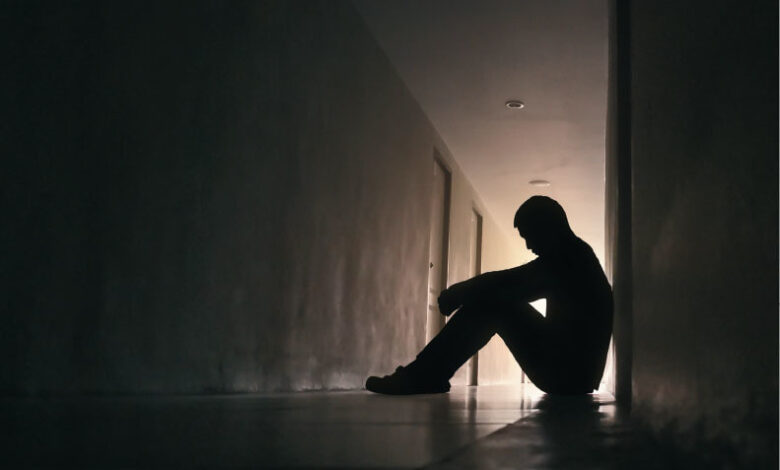
Silent Struggles: Supporting Male Survivors of Intimate Partner Violence and Trauma
When we hear of intimate partner violence (IPV), we quickly come to the be lief that the relationship is between a man and a woman, with the woman being the victim, and the man being the aggressor. However, violence against men is more common than the general population may believe. The CDC (2024) reports that 1 in 10 males in the United States have experienced some type of sexual or physical violence or stalking over the course of their lives. Of these male victims, over half have experienced this for the first time prior to the age of 25.
While the rates of IPV against women may be higher, we have to explore some of the reasons for that which go beyond frequency of occurrence. We know women struggle to seek help in these relationships, and it creates a cycle of violence in which individuals stay with their partners that abuse them. However, the same can be true for male victims, and it can be argued that there is a greater resistance in men reporting IPV due to a variety of factors. Let’s explore some of these reasons that men are not seeking out support.
BARRIERS TO REPORTING AND SEEKING SUPPORT
Many factors contribute to male victims of IPV failing to report their experienced abuse. The following are not comprehensive, and it is important to note that each individual has their own subjective experience and personal reason for making the choices they do. However, these are some of the more commonly reported barriers to reporting in recent literature.
1. SOCIETAL EXPECTATIONS
As much as there have been changes over time to traditional gender roles, the beliefs are still strongly present in Western culture. These beliefs become ever more present depending on cultural factors, such as machismo in the Latinx population. Men are socialized to believe that they are strong, assertive and have a responsibility to take care of their families, leading them to stay silent out of fear of damaging their family unit or losing access to their children if they are to separate from their partner. There is a sense of power that comes along with being a man, and to be viewed as weak is not desired. These factors create significant emotional and social barriers that prevent many male victims from seeking help or reporting abuse (Simon, Possick and Aviad, 2024).
2. SHAME
The idea of feeling embarrassed or having shame from the abuse experience can be associated with the societal expectations of men in general. Witherspoon et al. (2024) conducted a study on male survivors of sexual violence which found that rape myth acceptance (believing in the stereotypes of blaming the victim and other normalizations of sexual violence) had a strong association with self-blame and feelings of shame. The study also highlights that men who perceive themselves as having failed to prevent their trauma are more likely to experience shame-based self-blame, further silencing them and discouraging help-seeking behavior. One common belief in the study relates to men feeling self-blame due to being under the influence of drugs or alcohol during the abuse, which contributes to their thinking that they are at fault for the assault.
3. FEAR OF COUNTER ACCUSATIONS
Many men do not report IPV due to a fear of counter accusations, particularly that their abuser may falsely claim they were the aggressor. This fear is again tied to gender stereotypes that typically portray men as perpetrators and women as victims, making it more likely that a male victim’s claims will be met with skepticism by law enforcement, social services or the court system. If there is a physical abuse incident, the assumption that men are inherently more violent can lead to automatic accusation and blame. This risk of being accused as being the abuser—along with potential legal consequences or loss of custody rights—discourages many male victims from coming forward and seeking help.
4. LGBTQ+ CONSIDERATIONS
Men in LGBTQ+ relationships face unique barriers to reporting IPV, particularly the fear of being outed or exposing their sexual orientation or gender identity. For individuals who are not openly out, the threat of a partner disclosing their identity to family, employers or communities can be used as a powerful tool of control. Additionally, gay, bisexual and transgender men may fear encountering homophobia or misunderstanding from law enforcement or support services including medical care and treatment in hospitals or other community settings, which are often geared toward heterosexual victims and may lack training in LGBTQ+ issues.
LOOKING AHEAD—WAYS TO SUPPORT MALE SURVIVORS INTIMATE PARTNER VIOLENCE
If we know that male survivors have these additional barriers to seeking help, what can we do about it? Scott-Storey et al. (2023) highlight the fact that many assessment tools that measure IPV variables were created for women and have not been found to be reliable or valid for use in males. If this is the case, how are we even properly completing assessments and measurements in the males that do seek treatment? Additional guidance in the research includes gaining a better understanding of:
- Who are the best professionals to refer male victims of IPV for support
- “Market” services to male survivors so they feel more comfortable to seek help as most services are targeted toward female survivors
- Understand how male survivors prefer to seek help (virtual, in person, etc.)
- Understand what training is needed for service providers to properly treat male survivors (Huntley et al. 2020).
REFERENCES
Centers for Disease Control (2024). https://www.cdc.gov/intimate-partner-violence/about/intimate-partner-violence-sexual-violence-and-stalking-among-men.html
Domestic Violence Services Network, Inc. (2024) https://www.dvsn.org/september-2024-male-victims-of-domestic-violence-distinct-challenges-barriers-to-disclosure-and-support/
Huntley, A.L, Szilassy, E., Potter, L., Malpass, A., Williamson, E., and Feder, G. (2020). Help Seeking by Male Victims of Domestic Violence and Abuse: An Example of an Integrated Mixed Methods Synthesis of Systematic Review Evidence Defining Methodological Terms. BMC Health Services Research. 20:1085.
Scott-Storey, K., O’Donnell, S., Ford-Gilboe, M., Varcoe, C., Wathen, N., Malcolm, J., and Vincent, C. (2023). What About the Men? A Critical Review of Men’s Experiences of Intimate Partner Violence. Trauma, Violence and Abuse. Vol. 24(2).
Simon, R.B., Possick, C., and Aviad, Y.W. (2024). The Fragmented Experience of Male “Victims” of Intimate Partner Violence in Heterosexual Relationships. Studies in Clinical Social Work: Transforming Practice. Vol. 94(2).
Witherspoon, N.L., Thorp, S.R., Shuman, T., and Stolberg, R. (2024). Predictors of Trauma-Related Self-Blame in Male Survivors of Sexual Violence. Journal of Child Sexual Abuse. Vol. 33(8).
, LCSW, CMC, CDP, holds a doctorate in social work from Aurora University and has spent the majority of her professional career serving the geriatric population and their families. With extensive experience in social work, care management, and elder care, she has developed a deep commitment to improving the lives of older adults through comprehensive support and advocacy. Jennifer currently serves as the regional director for the Midwest region at Arosa, a leading provider of private care management and home care services across the United States. In this role, she is responsible for overseeing the delivery of high-quality care and ensuring that Arosa’s services are tailored to meet the unique needs of clients and their families. With her expertise and leadership, Jennifer continues to drive positive outcomes for older adults and their caregivers, advocating for holistic, person-centered approaches to care.
Image credit: AONPROM PHOTO/SHUTTERSTOCK.COM

 Jennifer Gazda
Jennifer Gazda


